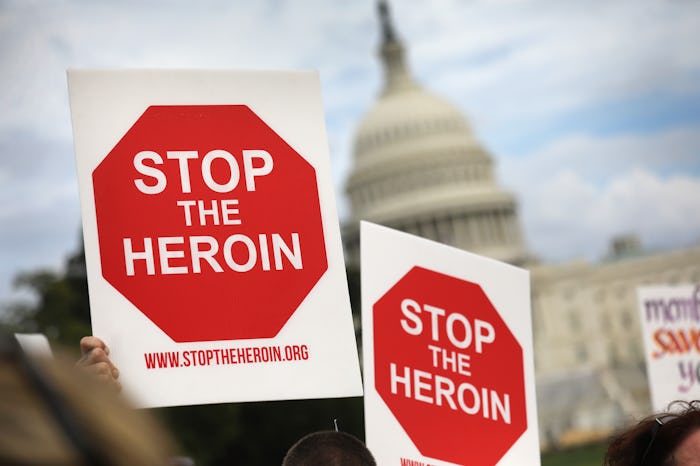Life

Trump's Policies Hurt Children Of The Opioid Epidemic
While on the campaign trail, President Donald Trump vowed to fight the opioid epidemic gripping the United States. He promised to spend millions of dollars on prevention, treatment, and recovery to help people living with opioid addictions and their families. But since taking office, the president has yet to follow through on his plans to combat the crisis. And this is how Trump is failing children of the opioid epidemic.
Mother Jones published a riveting expose in its July-August issue that breaks down how the Trump administration has turned its back on kids who are entering the U.S. foster care system because of the opioid crisis. According to Mother Jones, there were 30,000 more foster kids in 2015 than three years prior, which breaks down to an 8 percent increase. But in 14 states, the number of children in foster care jumped by more than one-quarter between 2011 and 2015. And these statistics don't seem to be easing anytime soon.
To be fair, Trump inherited the opioid epidemic, which has grown in the United States over the last two decades. But as Mother Jones pointed out, Trump has not held to his campaign promises. Instead, he backs GOP efforts to cut Medicaid funding — a vital program that has helped people recover from opioid addiction — and has proposed significant funding cuts to child welfare and substance abuse services for the next budget year.
The Trump administration has also proposed a 95-percent budget cut for the Office of National Drug Control Policy, according to POLITICO. This loss in funding in the 2018 fiscal year would nearly eviscerate the agency, which is responsible for leading the fight against the opioid epidemic and other drug crises. That means already cash-strapped and understaffed prevention, treatment, and recovery services across the country would be dealt a significant blow, which could only exacerbate prescription painkiller and heroin abuse. Opioid overdoses, by the way, killed more than 33,000 people in 2015, according to the U.S. Centers for Disease Control and Prevention.
But the history of the opioid epidemic is actually complex. It can be traced back to the early 1900s, during a time when heroin was considered a "wonder drug" for pain relief. According to CNN, heroin wouldn't become illegal until 1924, after doctors began to realize just how addictive opioids can be.
For a while, doctors avoided treating patients with highly addictive pain relievers. But that started to change around the late 1980s, when members of the medical community began to push for better management of chronic pain, CNN reported. Opioid use, though, wouldn't explode until the 1990s and the birth of OxyContin; a 2014 U.S. National Institute on Drug Abuse study found that, between 1991 and 1996, the number of prescription opioids filled by pharmacies rose on average by more than 2 million each year. By 2011, drug stores dispensed a record 219 million painkiller prescriptions — a nearly 200 percent jump from 1991, according to NIDA statistics.
The modern opioid epidemic started to swell under the George W. Bush administration, and peaked under President Barack Obama. That’s because, as Vox reported last month: “It’s easier to get high than to get help for addiction.” According to Vox, from 2010 to 2016, people diagnosed with opioid use disorders increased by 493 percent. Yet, the number of people in medication-assisted treatment for opioid addiction only increased by 65 percent in that time.
Trump's cut to Medicaid and programs to prevent and treat addictions will only serve to harm the very people he promised to help if he was elected to office. And the children of the opioid epidemic would be the ones hurt most by his failure to act.